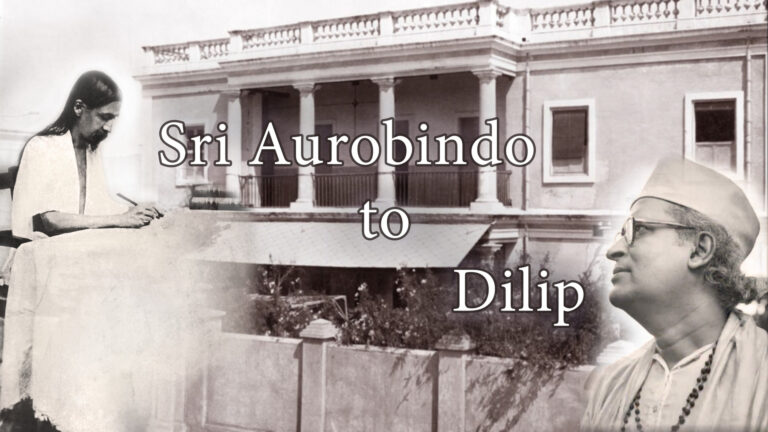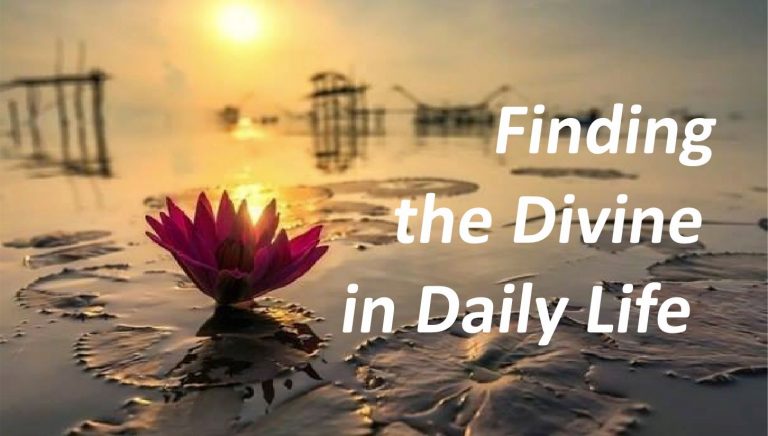 Finally the story of Ramayana cannot be complete without Hanuman, the Avatar of Shiva as Rudra who comes to aid the work of Vishnu embodied in Rama. He represents the perfect bhakta whose life is dedicated in the service of the Lord. One-pointed in his mission to serve the Lord he has taken an body despite being a celestial being since thus alone he could serve Him best. Every ready to listen and obey the slightest command of the Divine he is fearless and strong knowing that his life and death are in the Lord’s hands. But he is also wise, he knows how to distinguish truth from falsehood and to find the way through every difficulty and obstacle that may arise in the path of his service. He is the ideal that man must follow in his ascension towards the Divine consciousness out of our present animal nature. For while the mind can enjoy the study scriptures and the heart feel joy in singing the name of the Lord, the animal arts in us can only be tamed through service of the Lord. This is what the life and story of Hanuman reveals. Without service knowledge remains theoretical, without service bhakti remains incomplete, without service our freedom remains imperfect.
Finally the story of Ramayana cannot be complete without Hanuman, the Avatar of Shiva as Rudra who comes to aid the work of Vishnu embodied in Rama. He represents the perfect bhakta whose life is dedicated in the service of the Lord. One-pointed in his mission to serve the Lord he has taken an body despite being a celestial being since thus alone he could serve Him best. Every ready to listen and obey the slightest command of the Divine he is fearless and strong knowing that his life and death are in the Lord’s hands. But he is also wise, he knows how to distinguish truth from falsehood and to find the way through every difficulty and obstacle that may arise in the path of his service. He is the ideal that man must follow in his ascension towards the Divine consciousness out of our present animal nature. For while the mind can enjoy the study scriptures and the heart feel joy in singing the name of the Lord, the animal arts in us can only be tamed through service of the Lord. This is what the life and story of Hanuman reveals. Without service knowledge remains theoretical, without service bhakti remains incomplete, without service our freedom remains imperfect.
This and much more is there in the Ramayana if we care to find. But a word of caution is needed. We should be careful not to fall prey to this modern mentality that is nitpicking and eager to find faults ion the great ones. Great beings may and do have their imperfections. In fact the greater the light the deeper the shadow it casts by contrast. So too the characters of the Ramayana are not perfect beings, certainly not by our standards. But their imperfection is over-arched by the spirit of dharma in which they dwell, the light of dharma that they hold as a light and guide for all action, and the love for dharma that impels them to make any amount of sacrifice that may be needed for the victory of Truth and the advent of a diviner life upon earth. Most importantly, the Ramayana, especially the work of Tulsidas (and other poets like Kamban) provide for man the much needed food and nourishment for his soul. For while we have all kinds of food to nourish (or harm) our mind and senses and the bodily self there is very little to nourish our heart and soul. The story of Rama and Sita fills that and hence its relevance will continue to remain as long as earth remains as a field for the evolution of the human soul through the various challenges and vicissitudes of life towards Truth and Light and Beauty of Love and the dream of a harmonious collective living.
Sri Aurobindo remarks about Ramayana and its main hero Rama, the legendary king and Avatara of Vishnu:
The Ramayana is a work of the same essential kind as the Mahabharata; it differs only by a greater simplicity of plan, a more delicate ideal temperament and a finer glow of poetic warmth and colour. The main bulk of the poem in spite of much accretion is evidently by a single hand and has a less complex and more obvious unity of structure. There is less of the philosophic, more of the purely poetic mind, more of the artist, less of the builder. The whole story is from beginning to end of one piece and there is no deviation from the stream of the narrative. At the same time there is a like vastness of vision, an even more wide-winged flight of epic sublimity in the conception and sustained richness of minute execution in the detail. The structural power, strong workmanship and method of disposition of the Mahabharata remind one of the art of the Indian builders, the grandeur and boldness of outline and wealth of colour and minute decorative execution of the Ramayana suggest rather a transcript into literature of the spirit and style of Indian painting. The epic poet has taken here also as his subject an Itihasa, an ancient tale or legend associated with an old Indian dynasty and filled it in with detail from myth and folklore, but has exalted all into a scale of grandiose epic figure that it may bear more worthily the high intention and significance. The subject is the same as in the Mahabharata, the strife of the divine with the titanic forces in the life of the earth, but in more purely ideal forms, in frankly supernatural dimensions and an imaginative heightening of both the good and the evil in human[p.349] character. On one side is portrayed an ideal manhood, a divine beauty of virtue and ethical order, a civilization founded on the Dharma and realising an exaltation of the moral ideal which is presented with a singularly strong appeal of aesthetic grace and harmony and sweetness; on the other are wild and anarchic and almost amorphous forces of superhuman egoism and self-will and exultant violence, and the two ideas and powers of mental nature living and embodied are brought into conflict and led to a decisive issue of the victory of the divine man over the Rakshasa. All shade and complexity are omitted which would diminish the single purity of the idea, the representative force in the outline of the figures, the significance of the temperamental colour and only so much admitted as is sufficient to humanise the appeal and the significance. The poet makes us conscious of the immense forces that are behind our life and sets his action in a magnificent epic scenery, the great imperial city, the mountains and the ocean, the forest and wilderness, described with such a largeness as to make us feel as if the whole world were the scene of his poem and its subject the whole divine and titanic possibility of man imaged in a few great or monstrous figures. The ethical and the aesthetic mind of India have here fused themselves into a harmonious unity and reached an unexampled pure wideness and beauty of self-expression. The Ramayana embodied for the Indian imagination its highest and tenderest human ideals of character, made strength and courage and gentleness and purity and fidelity and self-sacrifice familiar to it in the suavest and most harmonious forms coloured so as to attract the emotion and the aesthetic sense, stripped morals of all repellent austerity on one side or on the other of mere commonness and lent a certain high divineness to the ordinary things of life, conjugal and filial and maternal and fraternal feeling, the duty of the prince and leader and the loyalty of follower and subject, the greatness of the great and the truth and worth of the simple, toning things ethical to the beauty of a more psychical meaning by the glow of its ideal hues. The work of Valmiki has been an agent of almost incalculable power in the moulding of the cultural mind of India: it has presented to it to be loved and imitated in figures[p.350] like Rama and Sita, made so divinely and with such a revelation of reality as to become objects of enduring cult and worship, or like Hanuman, Lakshmana, Bharata the living human image of its ethical ideals; it has fashioned much of what is best and sweetest in the national character, and it has evoked and fixed in it those finer and exquisite yet firm soul tones and that more delicate humanity of temperament which are a more valuable thing than the formal outsides of virtue and conduct.
CWSA 20: 349 – 351
* * *
Also, I do not consider your method of dealing with Rama’s personality to be the right one. It has to be taken as a whole in the setting that Valmiki gave it (not treated as if it were the story of a modern man) and with the significance that he gave to his hero’s personality, deeds and works. If it is pulled out of its setting and analysed under the dissecting knife of a modern ethical mind, it loses all its significance at once. Krishna so treated becomes a mere debauchee and trickster who no doubt did great things in politics—but so did Rama in war. Achilles and Odysseus pulled out of their setting become, one a furious egoistic savage, and the other a cruel and cunning savage. I consider myself under an obligation to enter into the spirit, significance, atmosphere of the Mahabharata, Iliad, Ramayana and identify myself with their time-spirit before I can feel what their heroes were in themselves apart from the details of their outer action.
As for the Avatarhood, I accept it for Rama first because he fills a place in the scheme and seems to me to fill it rightly—and because when I read the Ramayana I feel a great afflatus which I recognise and which makes of its story—mere faery tale though it seems—a parable of a great critical transitional event that happened in the terrestrial evolution and gives to the main character’s personality and actions a significance of the large typical cosmic kind which these actions would not have had if they had been done by another man in another scheme of events. The Avatar is not bound to do extraordinary actions, but he is bound to give his acts or his work or what he is—any of these or all—a significance and an effective power that are part of something essential to be done in the history of the earth and its races….
It was not at all Rama’s business to establish the spiritual stage of that evolution—so he did not at all concern himself with that. His business was to destroy Ravana and to establish the Ramarajya—in other words, to fix for the future the possibility of an order proper to the sattwic civilised human being who governs his life by the reason, the finer emotions, morality or at least moral ideals, such as truth, obedience, cooperation and harmony, the sense of humour, the sense of domestic and public order, to establish this in a world still occupied by anarchic forces, the Animal Mind and the powers of the vital Ego making its own satisfaction the rule of life, in other words, the Vanara and the Rakshasa. This is the meaning of Rama and his life-work and it is according as he fulfilled it or not that he must be judged as Avatar or no Avatar. It was not his business to play the comedy of the chivalrous Kshatriya with the formidable brute beast that was Bali, it was his business to kill him and get the Animal Mind under his control. It was his business to be not necessarily a perfect, but a largely representative sattwic Man, a faithful husband and lover, a loving and obedient son, a tender and perfect brother, father, friend—he is friend of all kinds of people, friend of the outcaste Guhaka, friend of the Animal leaders, Sugriva, Hanuman, friend of the vulture Jatayu, friend even of the Rakshasa Vibhishan. All that he was in a brilliant, striking but above all spontaneous and inevitable way, not with a forcing of this note or that like Harishchandra or Shivi, but with a certain harmonious completeness. But most of all, it was his business to typify and establish the things on which the social idea and its stability depend, truth and honour, the sense of the Dharma, public spirit and the sense of order. To the first, to truth and honour, much more even than to his filial love and obedience to his father—though to that also—he sacrificed his personal rights as the elect of the King and the Assembly and fourteen of the best years of his life and went into exile in the forests. To his public spirit and his sense of public order (the great and supreme civic virtue in the eyes of the ancient Indians, Greeks, Romans, for at that time the maintenance of the ordered community, not the separate development and satisfaction of the individual was the pressing need of human evolution) he sacrificed his own happiness and domestic life and the happiness of Sita. In that he was at one with the moral sense of all the antique races, though at variance with the later romantic individualistic sentimental morality of the modern man who can afford to have that less stern morality just because the ancients sacrificed the individual in order to make the world safe for the spirit of social order. Finally it was Rama’s business to make the world safe for the ideal of the sattwic human being by destroying the sovereignty of Ravana, the Rakshasa menace. All this he did with such a divine afflatus in his personality and action that his figure has been stamped for more than two millenniums on the mind of Indian culture and what he stood for has dominated the reason and idealising mind of man in all countries—and in spite of the constant revolt of the human vital is likely to continue to do so until a greater Ideal arises. And you say in spite of all this that he was no Avatar? If you like—but at any rate he stands among the few greatest of the great Vibhutis. You may dethrone him now—for man is no longer satisfied with the sattwic ideal and is seeking for something more—but his work and meaning remain stamped on the past of the earth’s evolving race.
When I spoke of the gap that would be left by his absence, I did not mean a gap among the prophets and intellectuals, but a gap in the scheme of Avatarhood—there was somebody who was the Avatar of the sattwic Human as Krishna was the Avatar of the overmental Superhuman—I see no one but Rama who can fill the place. Spiritual teachers and prophets (as also intellectuals, scientists, artists, poets, etc.)—these are at the greatest Vibhutis, but they are not Avatars.
CWSA 28 489-492



About Savitri | B1C1-10 The Response of Earth (p.5)